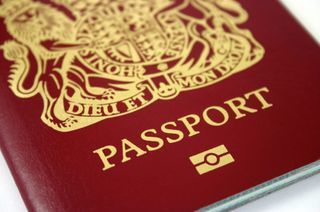Mary Beard's Blog, page 68
March 28, 2011
Mellon lectures and the Border Agency and HR
Thank you to all who wished me well, and thank you to all who came. The first lecture went fine I think. It was helped (audience, and other-wise) by a very nice article in the Washington Post. But perhaps this over-achieved, as there weren't in the end quite enough seats -- and I know some people had queued and were turned away. (I think that there will be a podcast in due course, and there is a video showing on Thursday lunchtime at the NGA for anyone in Washington.. but I am sorry for the frustration.)
I hope it doesn't put you off coming next time, when I am sure that the audience will have thinned. I shall be talking about the bottom line of Roman imperial representation and its discontents, but also about why the Renaissance and the early modern rich splattered their palazzi with emperors. Didn't they see that they were a load of ghastly autocrats, who came to sticky ends... ? I shall argue that they did..but . .
Anyway, this is all huge fun. But news from home is not good. Biggest on todays email agenda was the new ruling of the HR department (sorry "Division') about paying one-off lecturers, or external examiner.. or whatever.
Now apparently, before we can make any payment, we have to get a photo-copy of their passport, to show that they have permission to work here.
To put this in the simplest terms, it means that if I invite a colleague from the University of London to give a lecture to my Part II class on a subject of her own specialist expertise, before she can get paid £70something, I have to extract her passport photocopy... She may be a Cambridge graduate, she may be employed by a British University, she may have a UK NI number, but I still have to get a copy of her passport off her. I have to do the same even if she has previously been employed by the University of Cambridge. Same goes if she is examining a single PhD thesis
Can this possibly be sensible, or even a correct reading of the legislation? For a start the cost of the checking almost certainly exceeds the value of the fee. Secondly, there is no reason to suppose that this does anything practically to prevent illegal workig. Thirdly there is no actual reason to suppose that giving a one-off lecture does actually count as 'employment'. I mean does giving a single college 'supervision' count as employment? Is this someone in HR covering their butt, just in case someone challenges later? And if that IS the case, at what cost to the University, which is already not replacing academic posts. (How many passport checks would amount to one student bursary or one junior lecturer salary?)
Anyway, I have decided that I shall not show my bloody passport to anyone in return for the privilege of (eg) examining a PhD . . . I dont quite know why I feel so strongly about this but I do...
Partly because I can't help thinking that our University HR department has been "over-cautious" (and so also money-wasting at a time when we need all the cash we can get for our core activities...as a rule of thumb , every box-ticked takes at least an hour of someone's time.. and how many pounds..). I have so far never been asked for my passport at any other university or institution in the UK at which I have lectured or examined. Maybe I have been lucky, but that's the way I intend it to stay.
March 24, 2011
Powerpoint war....

I mean the war between me and the powerpoint. OK I know that I am lucky to live in the 21st century, and that only 15 years ago I would have had to order whatever slides I needed at least a week before my lectures (and if you only finish them 5 days in advance, that's a problem).
But this new technological world means that I reckon that I have spent as much time making the damn powerpoint as I have spent writing the first lecture. Or at least it feels like it.
Why so long?
Well, first of all I have too many images on my laptop...assembled for these Mellon lectures, but not properly sorted or named. So finding the particular shot of the particular statue of Julius Caesar I want amongst all the pics called anonymously 'img 2346', 'img 2347' etc can turn out to be a 20 minute job -- if you're lucky.
Then I discover that the pic is wildly too big and a bit pale. Reducing the size, cropping the extremities and adding a nice bit of contrast takes another ten minutes.
And that is before I have put any kind of caption in. Now my preference in PPT is to make it as like old-fashioned slides as possible, and I cant bear all the tricks of moving balloons, melting images, bullet points etc etc. But if you are going to whip by an image without saying exactly who it is by, or when, putting a simple caption on it seems a good idea.
So that is what I spent more than half of this morning doing, and felt pleased enough with the result. I then showed up at the National Gallery for a 'run through' (I was keen to know if the texts were big enough to be read from the back row by a normally sighted person). But, bloody hell, when we did the run through all but one of the captions had disappeared.
My first paranoid instinct was that it was a MAC/PC compatibility problem (like when young people turn up in Cambridge for job talks and the PPT turns their carefully selected Greek quotes into gibberish). But, you were right Lorenzo: what had happened was that the font colour had slipped back from white to black..and, so having reverted to black on black, was totally invisible.
So I have spent the evening correcting that and adding the remaining pictures.
The truth is I am quite pleased with the product. But was it a good use of time, with 5 more lectures to go? I don't think so (unless you imagine it is relaxing, which it sure doesn't feel!).
March 21, 2011
Lent?

I have been in the habit of giving up alcohol for Lent ... except when abroad (a territory which starts, on the Beard definition, after security at an airport). The trouble is that I am in Washington for the whole of Lent this year -- and my conscience (aka publisher) emailed me the other say to say that he didn't think that this long term transatlantic location let me off.
Well, I dont either. But it is quite difficult to give a series of lectures, with dinners and receptions, and to forswear the grape entirely (come to think of it, it is quite hard to write a series of lectures without the occasional snifter). So what is to be done?
I guess we are celebrating a reduced Lent.
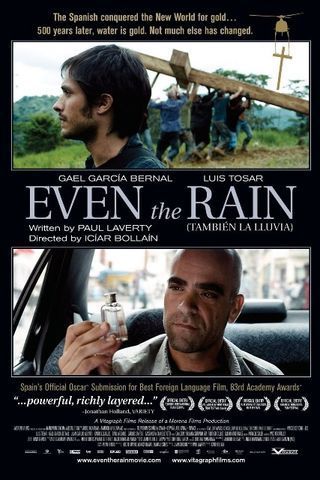
That is to say, the plan is (OK not quite started yet) to keep off the alcohol when home alone with the husband, but to allow alcohol when "out" (on the grounds that it would be rude otherwise).
This means the usual Lenten strategies. Number one, finding non-alcoholic drinks that are actually nice (ginger beer is the traditioanl favourite, but not stocked by the local CVS). Number two, finding wholesome evening activities that do not make you think that you would quite like a glass of Greco di Tufo (vel sim).
Top of that list is the movies -- an activity that I have never associated with drinking, nor even prompts a single thought of said glass of G di T (popcorn and icecream, maybe ... but where would you put the glass of wine at the cinema?).
Anyway, we started this yesterday with a visit to the local movie theatre, which is just a few metres up the street. They were showing a brilliant Spanish movie called (in English) Even the Rain (the pic at the top of this post is a still). This is not on general release in the UK, but if you find it showing DO GO AND SEE IT. It is a brilliantly sharp, and sometimes very funny, film about a group of film-makers making a film about Columbus' cruel exploitation of the New World. But the joke is that this group of "liberals' has come to Bolivia for the shoot, as extras are so cheap there... you get them for $2 a day.
Things, predictably, go wrong. The Bolivian that they have picked for a big role ends up leading the violent protests against the planned privatisation of water ("even the rain") .. and risks unseating the  film, when he gets arrested and beated up etc etc.
film, when he gets arrested and beated up etc etc.
The interplay between the film and the "film" is wonderful...so good that I want to see it again.
And while we are on movies, I found that I rather enjoyed Kevin Macdonald's new The Eagle: not quite sure what Rosemary Sutcliff would have made of it (it's based on Eagle of the Ninth).. but it is a lot more than the sword and sandals, plus a bit of sublimated gay erotics, that some have characterised it. The story isn't true of course, but it's a good against-the-grain look at the imperialist project.
March 16, 2011
Writing lectures
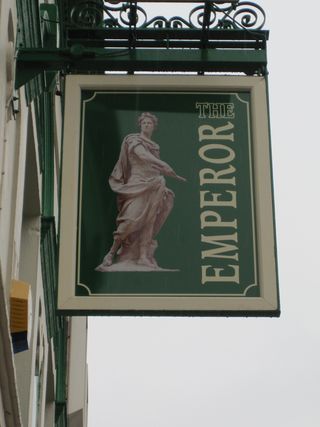
I am now in the middle of writing my first Mellon "emperors" lecture, for the National Gallery in Washington. I'm always surprised how little is written about the processes of writing. You read any number of autobiographies of academics, and they will almost never share the struggles of getting the words on the page and into the lecture hall. They just seem to have an idea and it pops into writing. Or on the other hand, they are blocked.. but they dont ever quite explain what the unblocking mechanism is.
I am now pretty clear about what I want to say in my first lecture. It will start from a curious story about a Roman imperial sarcophagus refused by President Andrew Jackson as a burial place, and will end up (by a logical path!) thinking about the ways, over the last 200 plus years, we have identified (ancient) portraits of Julius Caesar. My line here is that each generation finds a new image of Caesar for themselves... and new "real" images are identified, as each generation passes.
So far so good. But how do you go about putting this over to a mixed audience of 300+ (lets hope!) all of whom are smart, but some of whom are specialists, some not.
I have to say that I have scrubbed out an awful lot of versions. Not because they were wrong, but because they were boring. And then I scrubbed out more because, although they seemed quite sexy, I didnt think I wanted to say exactly that to the specialists in the audience. How do you arrive at something that is both academically cutting edge and defensible, AND then accessible to the intelligent general audience AND packs a punch.. that is to say makes it clear that you are still bloody keen on this subject on which you have promised to speak.
Anyway, after going in circles, a bit of a breakthrough came today. I thought I should have a look at what some of my images looked like on the big screen here. So I mocked up a powerpoint to have a test drive (thank you Mattie for arranging). I thought to start with that this was a terrible waste of time (it took me 2 hours to make the mock-up power point for heaven sake). But then, as I made it , I saw how amazing these images of Roman emperors I had assembled were, and how I had sold my self short. Too much anal obsession about anachronicity (a bit is surely needed, but only a bit) .. too little in your face stuff on the sheer, intriguing, intellectual splendour of Roman imperial images.
So 2500 words to go on lecture one, and I have seen the way forward; then only 25,000 words more to go.
March 13, 2011
BA cabin crew: the militants in the skies?

As I am in the USA, and going to be crossing the Atlantic a couple of times in the next few weeks, I find I have become more interested in the BA cabin crew dispute, and whether their new strike ballot will lead to a walk-out that will affect me.
This is, I am afraid, the self-interested approach to industrial relations -- and it is rather shamingly like my intense interest in the possibility of a federal government shutdown in Washington DC (if it closes the National Gallery, then I wont be able to give my lectures, after all this work . . .). Yes, I know this approach is unworthy, when other people wont be getting their pay-checks and the their Social Security payments and I will be the least important casualty in the grand scheme of things, but it's also human.
But as I have said before, the whole BA dispute is a bit of a mystery to me. Frankly the cabin crew don't look like militants; in fact, they seem more like Daily Mail readers than Guardian. And if you had to offer a crude stereotype (to which I KNOW there are hundreds of exceptions, before you lash out at me)... it would be a combination of men in more or less stable gay relationships, and women who are, well, rather like Kate Middleton's mum.
So how do we explain their apparent intransigence?
One possibility is that I havent seen a representative cross section of these people. Maybe on routes I dont travel, there are stewards whose hammer and sickle tattoes are just visible beyond their cuffs as they collect the head phones, or flog the duty-frees . . .and who cunningly spit into the food of the premium class passengers (that old restaurant trick of the underpaid and angry).
The other possibility is that the management is so hopelessly out of touch, unbending and inflammatory that it has driven these usually calm and conservative types to say enough is enough.
My money is on the latter.
March 10, 2011
The mystery of Caesar's ears
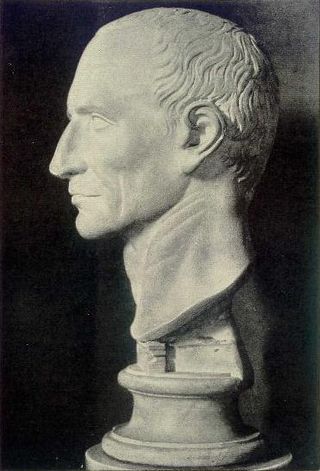
I have been back in Europe for a few days. The real reason was to go to the European Research Council in Brussels, where I am on a "Starting Grants" awarding panel... which gives large grants of more than a million euros, to young scholars in all research field (mine is 'The Study of the Past"). Interestingly the EU has not contracted these awards in the face of the recession, but expanded them, on the grounds that research is vital investment for the future.
Anyway after a bit of a rocky start 4 years ago (when the bureaucracy seemed to live up to all those Daily Mail style EU parodies.. but they still couldnt get the wi-fi to work),the whole process is now very smooth, thanks this year especially to our two EU administrators Volker and Frank (nice kids -- as they are bound to seem from my age -- who appear to speak most EU languages going).
It's a huge time commitment, but it has become one of my favourite jobs -- largely because of the chance to meet all the other people on the committee and work with them. Sure, I might have come across Carlo Ginzburg or Przemyslaw Urbańczyk at conferences... but you get to know then in a completely different way if you are working with them, and discussing the relative merits of research proposals.
That lasted Monday through Wednesday night (and we meet again to interview the candidates in the summer). But as it was actually cheaper to change in London and carry on by Eurostar than go direct from Washington to Brussels, I squeezed in, during the lay-over, a flying visit to the TLS (if you don't go and look at the books or the copy for 10 weeks, the mountain of print that confronts you is a bit dispiriting) and to the BM -- both conveniently near the Eurostar terminal.
The reason for going to the BM was to see one Caesar (illustrated above) -- and thanks to all there who got him out of his case and discussed him with me.
This came into the Museum in 1818... and was 'identified' as an ancient bust ofJulius Caesar in 1846. Then for more than a hundred years he was the canonical Caesar, until in the early 1960s Bernard Ashmole definitely dethroned him and showed him a (probably eighteenth-century) fake. One of the key indicators is the clear sign that his skin has been artifically "distressed" -- that is bashed with something rough -- to make it look old.
As always, when you actually look hard at this sculpture, other oddities appear. What really surprised me was what had happened behind his ears. On both sides, but more pronounced on one than the other, there were a series of clear drill holes, twenty or so, half a centimetre apart, running from the top right round to the lobe. You would have thought they were intended to attach something (if they were round his brow, it would have been a diadem), but nothing could have been attached round his ears.
So what were they? And does it make any difference to the arguments about his fake status?
I am not publishing a picture, because the BM nicely let me take some for my own use -- and I don't think "own use" includes blazoning them round the blogosphere. But if anyone want a look for serious study (no simple curiosity please.. else it will take me hours and hours, when I have lectures to write), I can let you have a look on a "one to one" basis.
March 6, 2011
Universities, despots and plagiarism
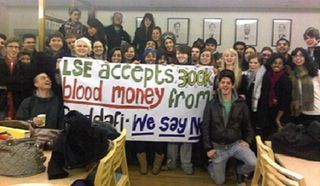
I have been in Washington DC, and have only seen the obvious bits of reportage about the resignation of Howard Davies, after the Gaddafi funding row.
I have to say that, nasty as Gaddafi is now proving himself (again?) to be, I feel rather sorry for Davies. Every government, for the last thirty years at least, has urged universities to chase outside funding; the chances were always going to be that some of it would come from dubious (or worse) sources.
For the fact is that people who make a very very great deal of money (the kind of money that would significantly fund a university) are often particularly nice. I know there are exceptions, but you know what I mean.
Sure, the spectrum is a wide one, and it runs from the criminal to the merely ruthless. At one end, there are the Gaddafis, the arms dealers and fraudsters (as well, if you like, as the tobacco companies). At the other are those who had a brilliant idea or a timely patented invention PLUS the drive to market and exploit it. Clever ideas on their own dont make people rich; it's clever ideas combined with a capacity to corner the market that does it.
Send universities (or museums, or whoever) chasing those multi-billionaires -- licensed begging, the husband calls it -- and sooner or later, you will find they have been tapping into a Gaddafi. It's hypocritical, when that happens, to point the finger (I'm not sure if ethical fund raising is any more feasible than an ethical foreign policy).
I feel conflicted on this one. Half of me wants nothing to do with it and thinks that we should fund universities etc properly from the public purse (however ethically tainted that may or may not be). The other half thinks that getting money from the bad and turning it to good ends might be a positive thing to do. I certainly suspect that many of the founders of Cambridge colleges acquired their cash in decidedly dubious ways, but we have been doing good with their ill-gotten gains for centuries. In a way, that counts as a moral transformation.
The other issue has been the spotlight on Gaddafi junior's PhD: plagiarised or not? I certainly havent seen enough to know, but I was taken aback by an article by Lord Desai in the Guardian on Friday. He was one of the PhD examiners and he wrote: "No one at this stage had said there were problems of authorship or plagiarism with the thesis".
I had always thought that determining authorship and originality was one of the jobs of the PhD examiner.
March 3, 2011
Latin -- in Jamie's Dream School and elsewhere

I don't know how many of you watched the Jamie Oliver's Dream School, episode one. As I have been i Washington working on my emperor lectures, I havent seen it. I believe that there was about 5 seconds of me, before the whole thing moved into the Starkey strop.
It's funny that the programme is billed as if it were the kids who are the reality tv characters here. But actually the spotlight is on the teachers -- with Starkey playing the Jade Goody part (lippy and off message, but brilliantly celeb status even if you end up hating him).To be fair, not everything he says is wrong (I could never quite understand why the head allowed the kids to take mobile phones into class.. or why they all came into my lesson with their shiny new laptops .. woudn't you have played with them? And he did say some nice things about me...and about why you might want to study history, and how you might want to understand the Middle Ages, etc)
I have to say, though, that in the "staff room" Starkey was the only one who didn't fess up to any nervousness or uncertainty about his ability to wow the kids -- unlike all the other celebs I met. So there is a certain satisfaction in seeing him in a bit of trouble.
Except that I think .. me next. It all depends how kind or cruel the editors of the days'worth of film have been.
Meanwhile, Latin hasn't had a bad press from all this. I wrote a piece for the Guardian about the whole Dream School idea, and a load of the comments came out very much on side.
And there are other great initiatives afoot to get Latin into schools at all levels. One is a new clasical magazine, Iota, for younger kids, published by the excellent Iris project. This mgazine needs funds to keep going, so if anyone has a quid or two to spare, you could always send it to Iris.
February 27, 2011
When did the toga go out of fashion?
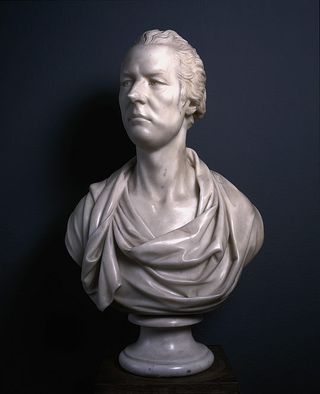
I'm hard at work on my "Twelve Caesars" lectures in Washington. And I'm thinking about the question of how, why and when modern, living people were represented, in portraits statues, wearing Roman dress -- like Pitt the Younger by Nollekens, above.
There have been flurries of interest in particular aspects of this question (in, for example, the tirade of Joshua Reynolds against Benjamin West, for doing his painting of the Death of Wolfe, below, in modern, rather  than Roman, kit). But my question is a bigger one. When, in the mainstream tradition of Anglo-American portrait sculpture does it become simply unthinkable to put your sitter in a toga or Roman armour? It was an option often taken, though never exclusive, from the beginning of the modern tradition of portraiture, in the fifteenth century century on. When did it start to seem silly? (We cant, after all imagine David Cameron, JFK or even Churchill being sculpted 'all'antica".)
than Roman, kit). But my question is a bigger one. When, in the mainstream tradition of Anglo-American portrait sculpture does it become simply unthinkable to put your sitter in a toga or Roman armour? It was an option often taken, though never exclusive, from the beginning of the modern tradition of portraiture, in the fifteenth century century on. When did it start to seem silly? (We cant, after all imagine David Cameron, JFK or even Churchill being sculpted 'all'antica".)
And a related, but significantly different question, is: which is the latest mainstream portrait we can find, in which the sitter is portrayed in Roman costume?
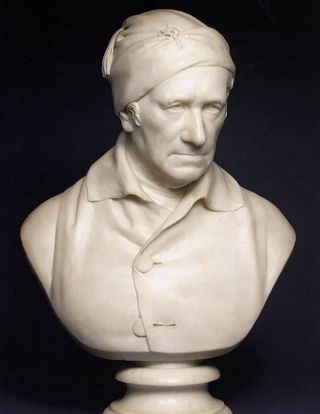
Of course, the boundaries can be a bit blurred. It's easy enough to recognise an uncompromisingly contemporary portrait bust, like Chantrey's bust of John Tooke above (roughly contemporary with Nollekens's Pitt). But there are all kinds of shades in between.
 You can fudge the cultural specificity by giving the bust no clothes at all, like Bartolini's portrait of Lord Byron on the left. Or you can choose clothes that somehow come in between the Roman and the modern (academic or clerical dress are both usefully interstitial in this respect).
You can fudge the cultural specificity by giving the bust no clothes at all, like Bartolini's portrait of Lord Byron on the left. Or you can choose clothes that somehow come in between the Roman and the modern (academic or clerical dress are both usefully interstitial in this respect).
But when did this become simply off limits?
Mussolini may be an exception, but so far as I can see the tradition of Roman portrait costume had pretty much gone on both sides of the Atlantic by the First World War.
Can anyone push it further than that?
February 24, 2011
Slash and burn at the Museum of London
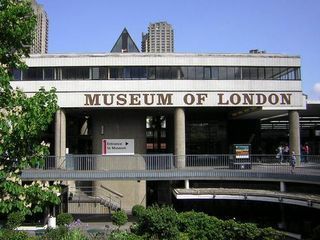
I may be in the USA but I still get word of terrible things going on in the UK. The latest bit of gossip to reach me is the plan to make most of the senior pre-modern curators at the Museum of London redundant.
Now I have a great soft spot for this Museum, and indeed have often taken students there. It has a wonderful Roman collection, and what used to be a state of the art display of Roman London ...now a bit in need of a revamp, but in fact I went to a meeting a year or so ago which was taking soundings about exactly how that should be planned. Anyway now it seems like the revamp is on hold, but even worse the senior curatorial staff are being "let go".
If anyone knows more about this than I do, please let me know.
But two things strike me.
First, a question. Who actually runs the Museum of London. It is in a strange position, being the 'local' museum of the capital ... and so having a world class collection, but geographically limited. Taking a look at the "governors" is a depressing business. I couldn't see anyone who had a professional expertise in archaeology or history, but rather a lot financial types. Now, I am quite sure that in the 'old days' the boards of museums were full of academics, at the expense of anyone with a business brain; but to see a group of people who are entirely from the financial/policy sector does not inspire confidence.
Which leads to the second point. I don't imagine that the 'business community' has any idea why senior, expert curators who are themselves engaged in research are the people who make museums tick -- and make them more than pretty displays. But they sure are, as I have been experiencing these last few weeks in preparing my lectures for Washington -- at the V and A, the BM, the Fitzwilliam and today at the Metropolitan Museum in New York. I went to see a wonderful piece of 16th century silverware (with am imperial theme -- on which more later), but ended up being shown, and thinking about, cameos and a marvellous piece of wooden sculpture and medals and much more.And that was because the curators were specialists who knew about the collection and how to develop it.
That is what will be lost at the Museum of London. So make a fuss please.. write to Boris; he should, after all, care about the fate of Roman London. And he appoints half the 'governors'.
Mary Beard's Blog
- Mary Beard's profile
- 4110 followers


